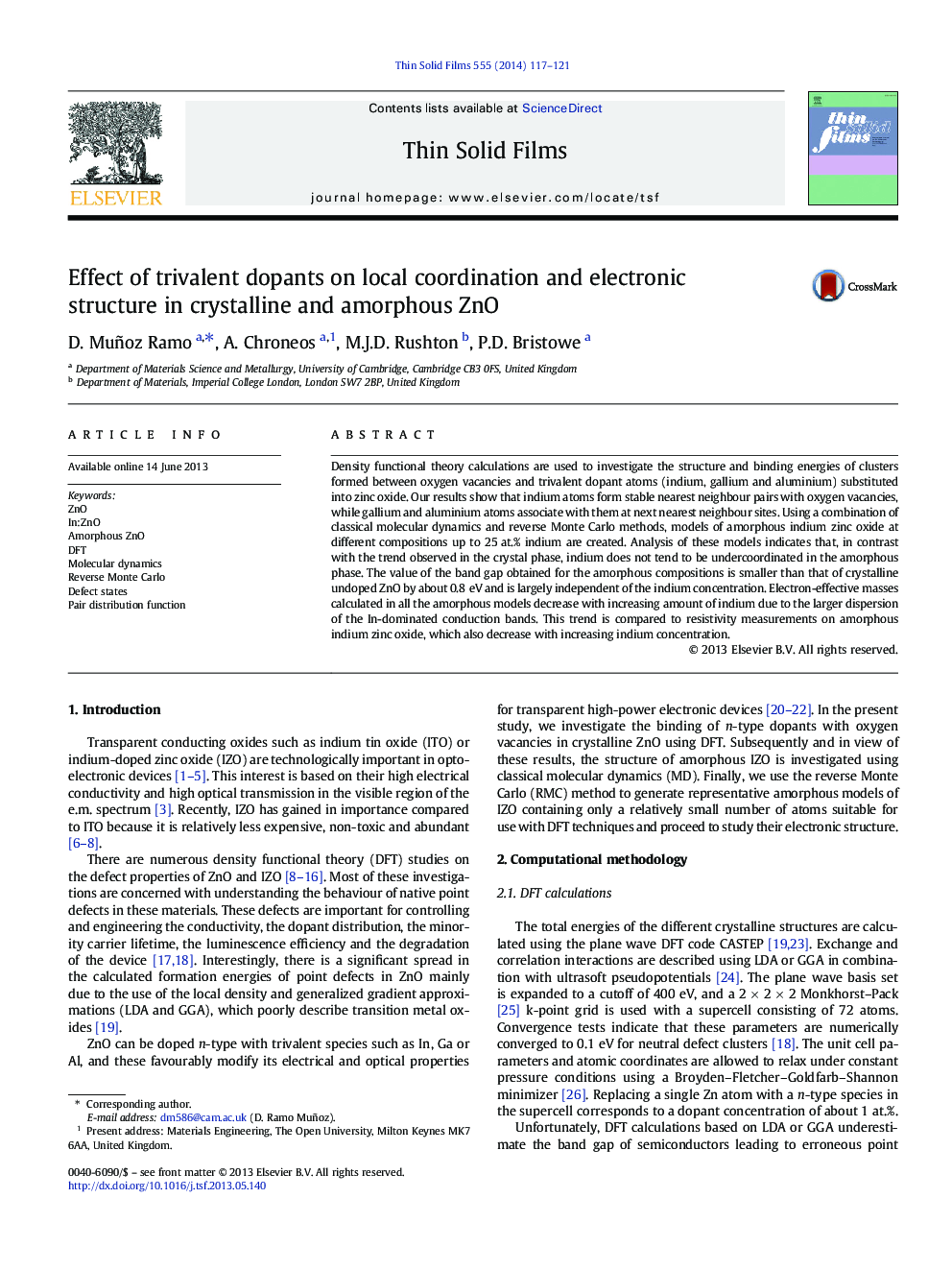| Article ID | Journal | Published Year | Pages | File Type |
|---|---|---|---|---|
| 1665563 | Thin Solid Films | 2014 | 5 Pages |
•Oxygen vacancies in c-M:ZnO (M = Al, Ga, In) associate most strongly with In.•The In-VO association in c-In:ZnO creates defect states which shift to lower energies.•In a-In:ZnO, the In-VO association which is seen in c-In:ZnO disappears.•a-In:ZnO exhibits no deep defect levels but shows states near the valence band edge.•The electron-effective mass in a-In:ZnO decreases with increasing In content.
Density functional theory calculations are used to investigate the structure and binding energies of clusters formed between oxygen vacancies and trivalent dopant atoms (indium, gallium and aluminium) substituted into zinc oxide. Our results show that indium atoms form stable nearest neighbour pairs with oxygen vacancies, while gallium and aluminium atoms associate with them at next nearest neighbour sites. Using a combination of classical molecular dynamics and reverse Monte Carlo methods, models of amorphous indium zinc oxide at different compositions up to 25 at.% indium are created. Analysis of these models indicates that, in contrast with the trend observed in the crystal phase, indium does not tend to be undercoordinated in the amorphous phase. The value of the band gap obtained for the amorphous compositions is smaller than that of crystalline undoped ZnO by about 0.8 eV and is largely independent of the indium concentration. Electron-effective masses calculated in all the amorphous models decrease with increasing amount of indium due to the larger dispersion of the In-dominated conduction bands. This trend is compared to resistivity measurements on amorphous indium zinc oxide, which also decrease with increasing indium concentration.
